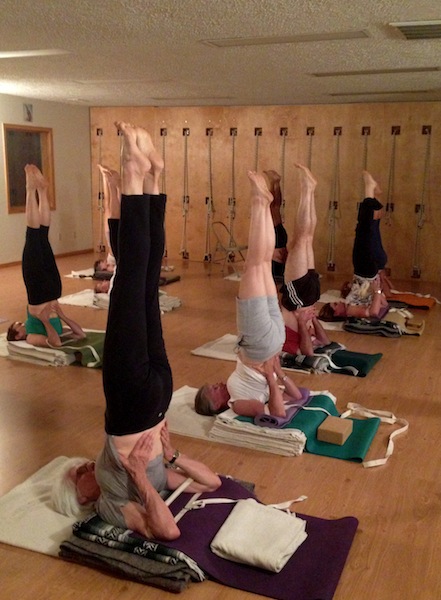Why Choose Iyengar Yoga?
Iyengar Yoga Benefits
What are the benefits of Iyengar Yoga? With so many different styles of yoga to choose from, it can be difficult to decide which one is best for you. Iyengar Yoga boasts a deeply rooted history, unique features, health benefits, and more -- making it one of the most accessible and favorable styles of yoga.
History
BKS Iyengar began studying yoga at the young age of 16. By 18, he traveled to Pune, India to teach others what he had learned through his studies. Focused on precision, depth and restorative powers found yoga, he sought--and found-- perfection within yoga asanas (poses) and pranayama (breathing practice), bringing the body, mind and spirit together.
Iyengar has authored 14 books. His most famous, Light on Yoga, has been translated into 18 languages and serves as a fundamental pillar in the study of yoga. Still practicing yoga, teaching workshops, and writing at 95-years-old, no yogi can deny that Iyengar is the leading yoga master in the world.

Unique Features
Focus on correct anatomical alignment: Emphasis on precise anatomical alignment in all poses makes each pose healthy for joints, ligaments and muscles, allowing the body to develop harmoniously.
Accessibility through the use of props: Iyengar yoga uses props to help the student, independent of their capabilities or limitations, reach the desired pose (asana). Blankets, belts, chairs, ropes, wooden blocks, and more are used in Iyengar yoga to reach a deeper penetration into the postures.
Instructors complete comprehensive and rigorous certification: As a result of years of study, instructors can quickly recognize the individual needs of students and identify which props to use and how. Everyone is an individual in life and in yoga--instructors understand this and guide students to reach rewarding, profound poses.
Longer holds of poses: Higher levels of strength, flexibility, healing and awareness can be reached when more time is spent in each asana (pose). During this time, students reach new levels of consciousness while practicing yoga.
Home practice: Just like any discipline, Iyengar yoga must be practiced. Practice at home is encouraged and essential to growth once fundamental poses are mastered.
Health Benefits
With his practice, Iyengar targeted multiple ailments and disorders. High blood pressure, depression, chronic neck and back pain, and immunodeficiency are just some conditions that he aimed to heal with his practice.
Thanks to greater time spent in each asana (pose) and the instructors' ability to tailor poses to individual's needs, Iyengar yoga can provide therapeutic benefits to tight, unstable or injured areas.
Yoga therapy classes are offered to best address therapeutic needs of students through yoga practice.
For more information, please visit:
Iyengar Yoga National Association of the United States (IYNAUS)


